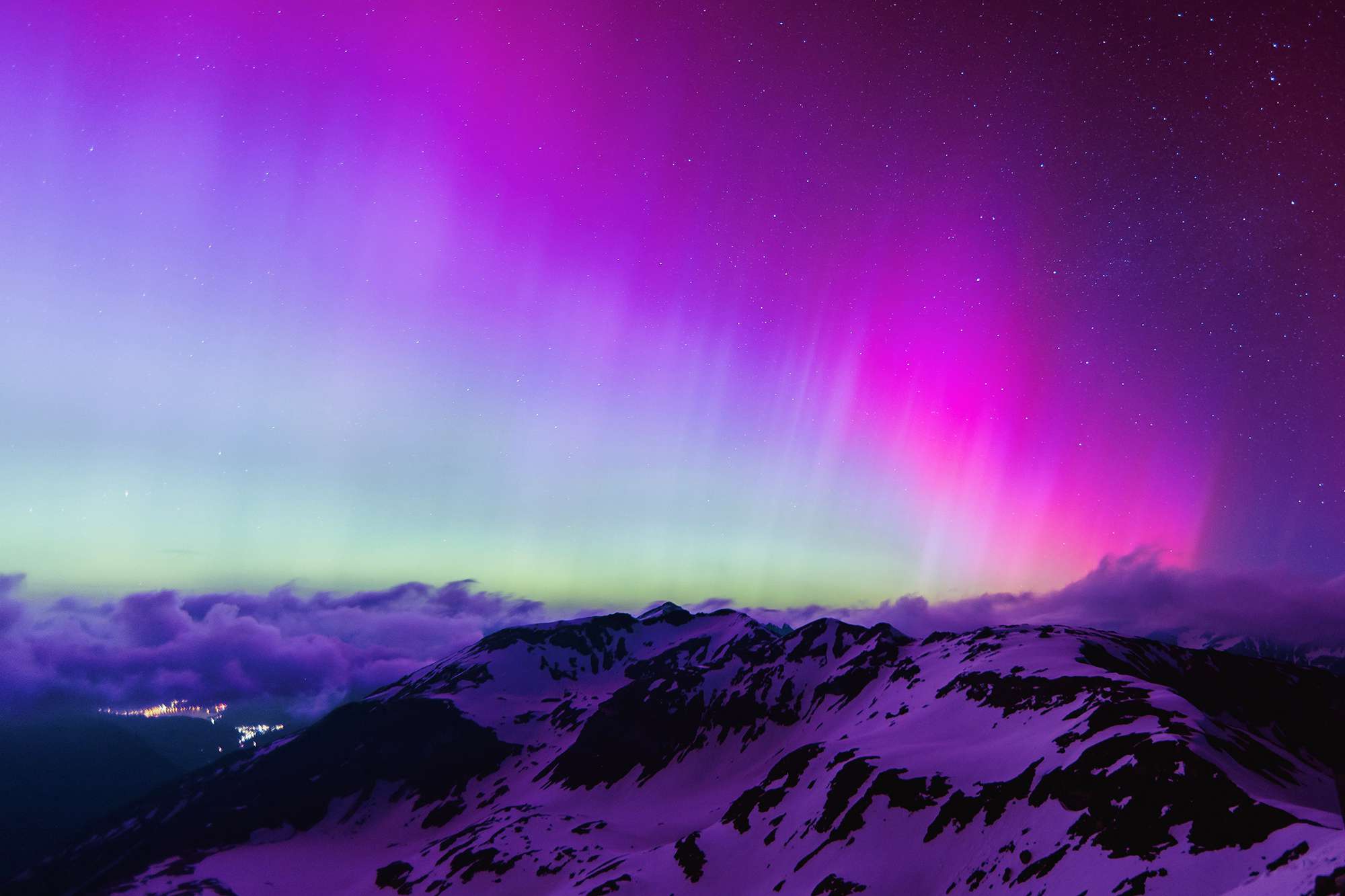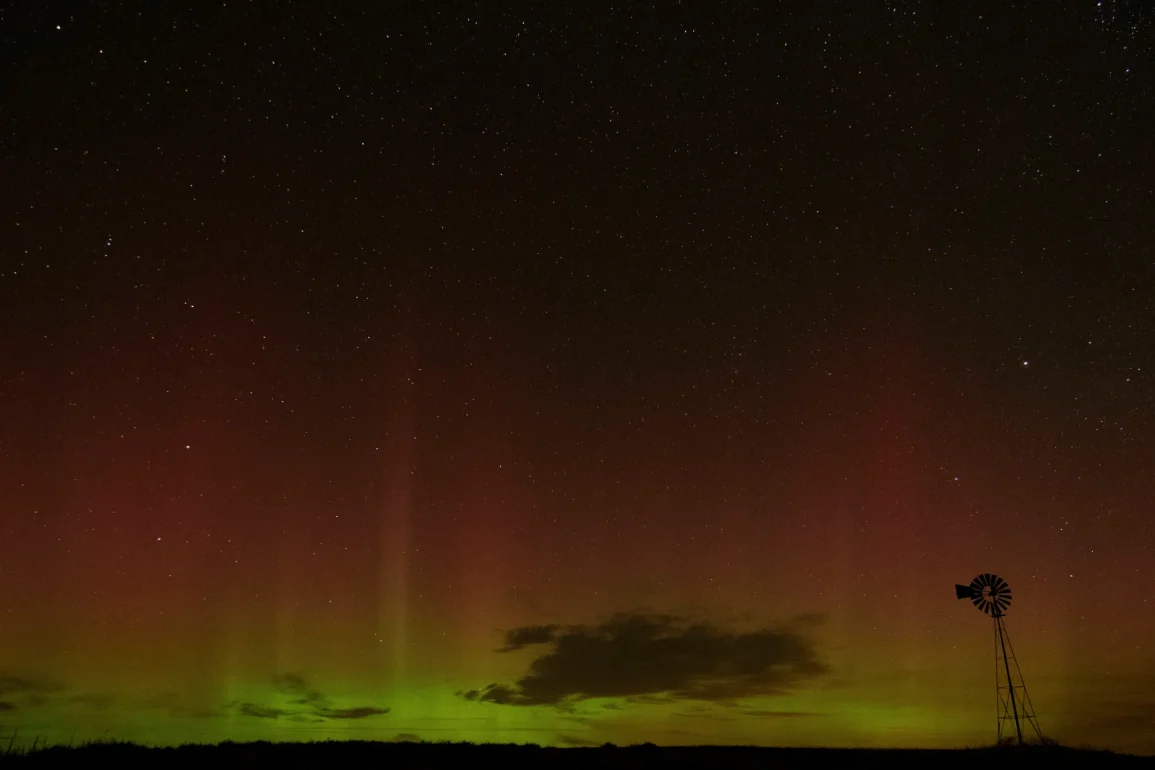A significant geomagnetic storm is set to provide Americans with an opportunity to witness the spectacular northern lights, also known as the aurora borealis, this week. This follows the observation of the second largest solar flare of the current solar cycle, an X7.1 flare, on Tuesday.
The National Oceanic and Atmospheric Administration’s Space Weather Prediction Center (SWPC) has indicated that the auroras will be visible in certain areas starting Thursday night and extending into the weekend. The SWPC has issued geomagnetic storm watches, which span minor to strong levels, predicting vibrant displays in the night sky.
Last week, forecasts suggested that the aurora would be visible across the northwestern U.S. and parts of the Midwest, indicating a trend of increased sightings as solar activity ramps up. A powerful geomagnetic storm in May had previously allowed many in the U.S. to see the auroras, even in regions not typically known for such displays.
However, that storm also caused disruptions to power grids and GPS signals, highlighting the broader impact of these solar events beyond just their visual splendor.

The Space Weather Prediction Center has pinpointed the dates of October 3 through October 5 for expected aurora visibility, particularly along the U.S.-Canada border and extending southward to places like Oregon and Pennsylvania.
The optimal viewing time is forecasted for the early hours of Friday, October 4, into Saturday morning. Nonetheless, the SWPC has cautioned that the forecast carries uncertainty due to the unpredictable nature of solar eruptions and their paths to Earth.
The increasing frequency and intensity of northern lights can be attributed to the sun nearing the peak of its 11-year solar cycle, specifically Solar Cycle 25, which is anticipated to reach its peak in 2025.
This solar cycle is characterized by increased sunspot activity and electromagnetic occurrences, leading to more frequent solar flares and coronal mass ejections. These events, especially the latter, can collide with Earth’s magnetosphere, triggering geomagnetic storms and making auroras more prevalent.
Auroras are fascinating natural displays caused by charged particles from the sun colliding with Earth’s atmospheric gases, resulting in bursts of light. As these particles enter the atmosphere, they interact with oxygen and nitrogen, gaining energy and releasing it in various colors, including green, red, blue, and pink, depending on the altitude and atmospheric composition.
Earth’s magnetic field plays a critical role by directing these particles toward the poles, producing the iconic rays and spirals of light that captivate observers.
For those hoping to catch a glimpse of the northern lights, locations near the magnetic poles in regions such as Alaska, northern Canada, and parts of Europe and Asia offer the best opportunities. Despite the increased chances of aurora displays, predicting their exact timing and location remains a challenge.
To maximize visibility, skygazers are advised to venture away from urban light pollution and seek clear, dark skies, particularly during the late-night hours. NOAA provides resources like an aurora dashboard to help enthusiasts track and anticipate auroral activity.

